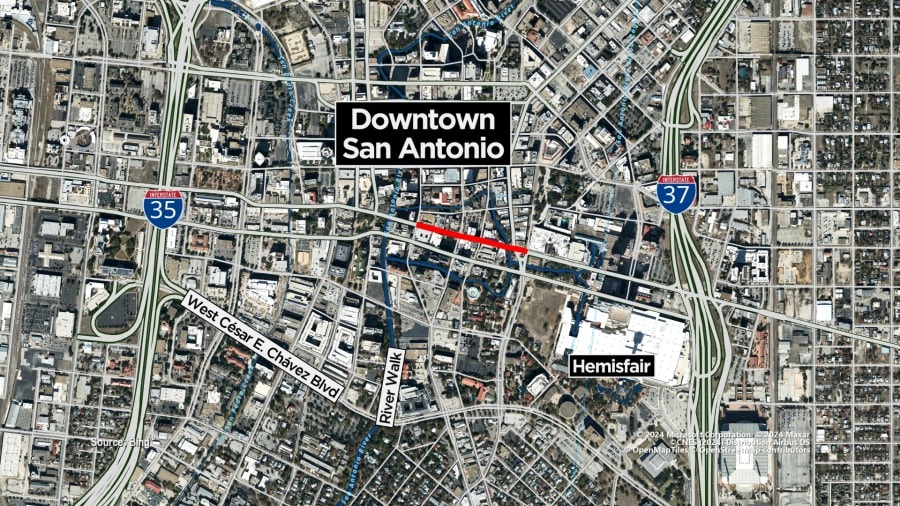SAN ANTONIO – San Antonio police plan to test out a network of city and private security cameras in downtown San Antonio, which could be monitored around the clock by both police and artificial intelligence.
The city has been discussing the idea of an integrated camera network for months with Centro San Antonio, the nonprofit that oversees downtown operations. The group says a consultant recommended it to help deal with downtown security concerns.
However, some council members are apprehensive about the network’s rollout.
“I am ... concerned that we’re moving closer and closer to violating all of the warnings of many dystopian novels about surveillance and an ever-growing police state and the use of AI,” said Councilman Jalen McKee-Rodriguez (D2) during a Tuesday budget meeting.
Chief William McManus said the city does not plan to use “controversial” facial recognition technology with the cameras, but it does plan to use AI software.
“I’m not a camera expert, but you can program these cameras to detect certain things that are happening that are not normally happening,” Chief William McManus told reporters after Tuesday’s budget meeting. “For example, there’s a crowd gathering, if there’s a fight, these cameras will detect that, and ... it’ll come up on the monitor.”
The city has $250,000 in its proposed budget to set up a camera network along the four blocks of Commerce Street between North St. Mary’s and Alamo Plaza, which McManus said is the area in downtown with the most calls for service.
Private businesses would also be able to link their cameras to the network.

San Antonio Police would monitor the cameras “full time, or as close to full time as we could get,” McManus said, allowing police to increase response times and use them to investigate crimes that do occur.
The chief said the accumulation of trash could even prompt them to send for a pickup.
Deputy City Manager Maria Villagomez told council members that a full year of around-the-clock monitoring would cost about $1 million.
Centro President and CEO Trish DeBerry said the nonprofit was discussing with its board how much it could contribute to support the plan. She listed Nashville, Minneapolis, London, and Mexico City as other cities where similar networks have helped prevent crime.
“By and large, what we’re talking about is Class B and C misdemeanors, which is criminal trespassing, breaking windows, breaking and entering, (and) breaking doors. But we have had sexual assault, sexual harassment,” DeBerry said.
She also noted a string of murders in the downtown area, though McManus said the initiative was not related to those.
Bill Lyons owns both Casa Rio and Schilo’s. He said staff at Schilo’s, which faces the street level instead of the Riverwalk, have to call police about once a week.
He links many of the problems they see to the large number of homeless people downtown. People often come in and order food that they can’t — or refuse to — pay for, he said.
“One guy locked himself in the restroom and wouldn’t come out, and he was in there screaming. We’ve had this window broken that you can see right there. That window was just broken out not too long ago,” Lyons said, pointing to the building next door. “And the plants get all pulled out of the planters by the homeless.”
Lyons thinks the cameras could help deter problems and said, “If they want us to link up, we’d be happy to do it.”
“I mean, we’re all trying to achieve the same goal: have a safe and clean downtown. So whatever will encourage that, we’re all for,” he said.
McManus said this limited first phase would last “I want to say for a year.” Expanding to more parts of downtown would depend on what they see happen.
The city council will vote on a final budget on Sept. 19.




